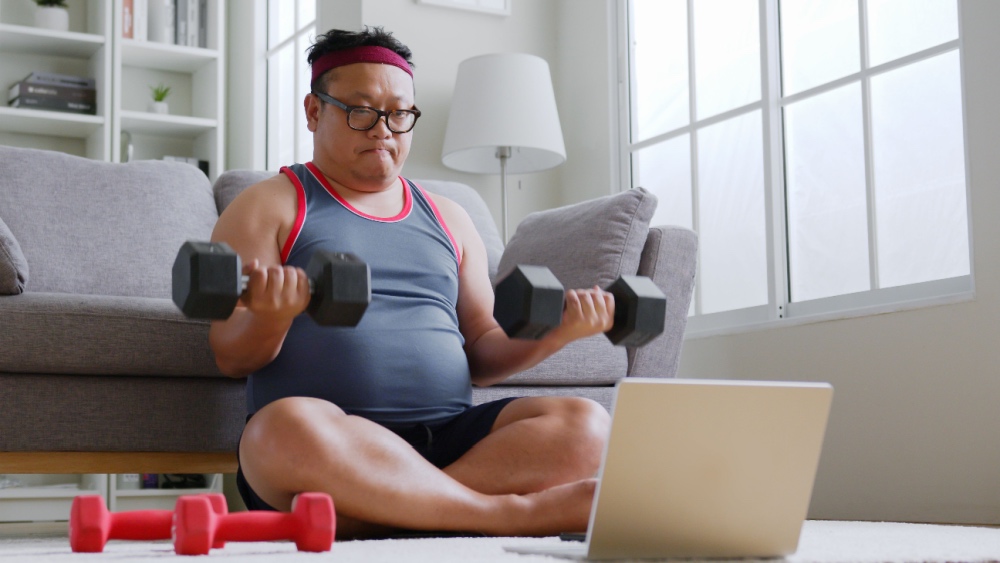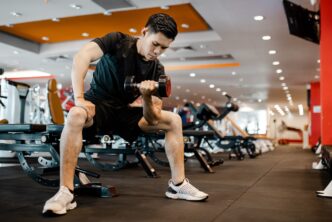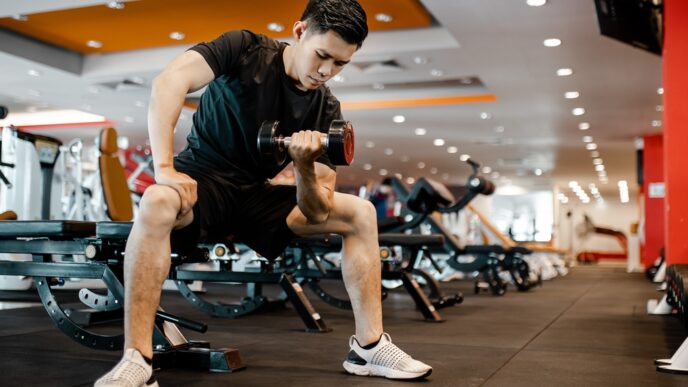The phrase “dad bod” is usually used to describe the “average guy” physique, the kind you’d see on a busy dad that has little time to stay physically active due to work and family obligations. A growing pouch belly is a common fixture of the dad bod. While “dad bod’ is often used as an endearing form of teasing, I’d caution that having one could also be a sign that you’re sliding further away from being a pillar of health.
WORDS WAI HOONG
 FEATURED EXPERT FEATURED EXPERTWAI HOONG Personal Trainer linktr.ee/waihoong |
BEING A DADDY CHANGES A MAN’S WORLD… AND HIS HORMONES TOO
The dad bod is more than just a growing belly. It’s a manifestation of the changes of a man’s body after becoming a father, and these changes will become more apparent should the man becomes sedentary.
- High levels of oxytocin — the love hormone — which promotes paternal instincts and successful relationships
- Increased levels of prolactin and oxytocin will increase a father’s alertness and response to his children’s cries and other signs of distress
- Increased levels of prolactin decrease a man’s libido. Nature’s way to let a man focus more on caring for kids instead of making more?
- Living with a pregnant partner can reduce a man’s testosterone by as much as 60% all the way until 3 months after the baby is born. This could be due to a lack of sleep stemming from his efforts to supporting his wife and baby.
These hormonal changes make it more difficult for a man to gain strength, build muscles, and lose fat.
The Testosterone Issue
Research has documented that men today have about 20% lower testosterone levels than men of the same age from a generation ago.
- As a result, there’s a good chance that men today are weaker, fatter, less muscular, less motivated, more flaccid, less fertile, and less healthy than those of the previous generation!
- That means dads today have a bit more work cut out for them, as fatherhood can cause a significant drop in testosterone levels, especially at night and early morning.
This drop is often attributed to stress and lack of sleep.
- For example, some study shows that a week of sleeping only 5 hours per night can cause a man’s testosterone levels to plummet by 10% to 15%, compared to those that sleep 7 to 8 hours a night.
- The effect can snowball over many months, causing further decrease in testosterone levels.
Hence, a busy father that juggles the often-stressful responsibilities at home and work may experience declining testosterone levels, which in turn that can affect his health, libido, and overall quality of life.
LET’S BEAT YOUR DAD BOD BLUES
It is one thing to go to a gym and work up a sweat to reduce that beer belly, but as we’ve seen, fatherhood changes the body in ways that require a more complete, holistic approach.
Both the mind and the body need some TLC when it comes to making the most out of fatherhood!
Step One: Get Enough Sleep
- Try what works for you. Some examples of ways to help you sleep better are essential oils, herbal teas, meditation, write a journal, plan your activities ahead of time, limit screen time before bed, establish your own routine.
- Consult a doctor if you have frequent problems falling asleep, or if you still feel exhausted despite having slept through the night.
Step Two: Practice Good Stress Management
- Start by identifying the cause(s) of your stress. Any unconscious concerns can spill over eventually, so the earlier and faster you identify the root of the problem and find a solution the better.
- Talk it out. It can be hard to identify the issues of one’s stress, sometimes, much less manage these issues. Get help and support if needed — a counsellor can help if you have no one in your circle that you confident to confide your issues in.
- Practice mindfulness to help you manage your stress better. Anchor your presence. Take a cold shower. Exercise. Go for a walk. Talk it out. Anything that brings you to the present.
- Breathe. This simple act helps to regulate tensions in your body.
- Practice 8/8/8 breathing: inhale and count to 8, hold your breath and count again to 8, and then exhale and count to 8.
Step Three: Get and Stay Active
- Play various sports and games… and have fun. It doesn’t always have to be competitive—you can join a short run or get together with friends to play badminton.
- Aside from the health benefits of regular exercise, doing this increases your self-esteem and promotes the release of feel-good hormones endorphins and dopamine.
FROM DAD BOD… TO HOT BOD!
A working daddy is always busy. Due to limited time, the goal here is to maximize training productivity and efficiency. Keep your training simple and focused!
Tip 1: Go for Short Workouts
- These are practical, more flexible, sustainable, and frees up time for the busy parent to focus on other errands.
- Short workouts also provide a better anabolic response, allowing more time for the body to recover.
- Furthermore, these workouts elevate the ability of the muscles to produce protein for growth and repair — muscle protein synthesis or MPS — for 24 to 36 hours after a workout.
Tip 2: Aim to Do Short Workouts 4 to 6 Times a Week
- Do multiple short workouts of 30 to 45 mins per session. Find what works for you, plan ahead, and get moving.
- If you are new to exercising, you can consult a personal trainer for a beginner programme that fits your health status and personal preferences. A physiotherapist can help if you have health issues that affect your ability to exercise.
- One advantage of seeking advice from an appropriate professional is that they can also motivate you and offer advice on how to exercise better. Once you are more confident, you can strike out on your own and explore more options.
Tip 3: Include Resistance Training in Your Workout
- Performing resistance training helps to increase insulin sensitivity — good for reducing the risk of type 2 diabetes or better management of the disease.
- You’ll also prime your muscles to handle nutrients more efficiently for growth and repair, as well as to burn fat.
A SAMPLE 6-DAY WORKOUT GUIDE FOR BEGINNERS
- If 6-day-a-week is too much for you at the beginning, try 4 days a week; you can slowly increase the amount of exercise as you get more comfortable with your new routine.
- For each type of exercise, do 1 to 3 sets, with 8 to 12 repetitions per set.
- Rest for 60 seconds between each sets.
Day 1: Upper Body Pull
- Dumbbell rows
- Dumbbell bicep curls
- Pull-ups
- Suspension low rows
Day 2: Lower Body Workout
- Dumbbell goblet squats
- Dumbbell walking lunges
- Suspension hip thrust and leg extensions
Day 3: Rest and Recovery
- Take it easy.
- Go for walks, do some stretching, do some light foam roll exercises.
Day 4: Upper Body Push
- Incline dumbbell chest press
- Dumbbell tricep extensions
- Suspension chest press
- Suspension flyes
Day 5: Rest and Recovery
- Once again, take it easy.
- Take a walk, stretch, try out some light foam roll exercises.
Day 6: Total Body Workout
Combine:
- 2 upper body pull exercises
- 2 lower body exercises
- 2 upper body push exercises
Bonus: Cardio
- Cardio improves body composition and a great stress reliever.
- It doesn’t have to be the treadmill or running all the time. Just aim to walk 8,000 to 10,000 steps a day — get an app or device to help you keep track.
- Housework, walking the dog, running after the kids in the park, walking around the mall with the family—all these and more count.
| This article is part of our series on tips and advice for leading a healthy lifestyle. |










